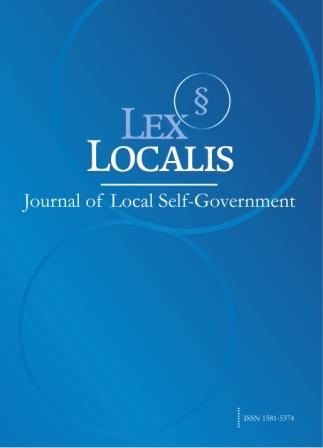Cultural advantages and practical dilemmas of the mediation system in the “Belt and Road” initiative
DOI:
https://doi.org/10.52152/800082Keywords:
Belt and Road; Investment; Justice; Rule of Law; Mediation SystemAbstract
This study analyzes cultural advantages and practical dilemmas of the mediation system in international investment dispute settlements of the Belt and Road Initiative. With increasing position of developing countries in the global outward foreign direct investment (FDI) pattern, China's non-financial funding of nations alongside the Belt and Road in 2025 will attain 17.79 billion U.S. dollars. During the same period, the amount of engineering contracts between China and countries along the Belt and Road amounted to 141.46 billion U.S. dollars, accounting for 55.4% of the total amount. Supported by a large amount of data, the article points out that it is difficult for the existing international dispute resolution system to adapt to highly heterogeneous legal, cultural and political backgrounds of the countries covered by the Belt and Road. It is urgent to establish a more flexible and inclusive mechanism. The mediation system shows unique advantages in dealing with investment disputes due to its economy, flexibility, and controllability of the outcome. This paper further points out that China's legislation in international commercial mediation is delaying practice, which has not yet formed an institutional status alongside arbitration and litigation. In addition, the mutual recognition and enforcement of transnational judicial decisions are limited by principle of “reciprocity of facts”. The coverage of bilateral mutual legal assistance treaties is narrow, which affects the efficiency and expected stability. By analyzing the existing legislative texts, this paper proposes a path to build an international commercial dispute mediation mechanism with pluralistic coexistence, unified rules, and a sound system, which will provide theoretical basis and policy suggestions to enhance the level of law and business environment of “Belt and Road”.
References
Wisthaler, A. (2016). In situ measurements and modeling of reactive trace gases in a small biomass burning plume. Atmospheric Chemistry and Physics, 16(6), 3813-3824.
de la Rasilla, I. (2021). ‘Sharp Ears to Hear a Thunderclap’? The rise of mediation in the international dispute prevention and settlement system of the belt and road initiative. Asia Pacific Law Review, 29(1), 167-188.
Wang, G., Lee, Y. L., & Leung, P. M. F. (2020). Dispute resolution mechanism for the belt and road initiative. Springer.
Merrills, J. G. (2017). International dispute settlement. Cambridge university press.
Laforge, J., Corkal, V., & Cosbey, A. (2021). Farming the Future.
CHIMNI, B. (2011). Centre for International Legal Studies School of International Studies (Doctoral dissertation, Jawaharlal Nehru University).
Wei, Z. (2024). China's Innovative Dispute Resolution under the" Belt and Road" Initiative. Public Health Policy and Laws Journal, 10(1), 153-168.
Sharma, S., & Sharma, R. K. (2016). Performance improvement of Savonius rotor using multiple quarter blades–A CFD investigation. Energy Conversion and Management, 127, 43-54.
Müller, M., Anderson, B. E., Beyersdorf, A. J., Crawford, J. H., Diskin, G. S., Eichler, P., ... &
Li, Y., Zhao, Y., & Yao, X. (2024). Does the Belt and Road Initiative upgrade the global value chain for BRI Countries: Revealing the substantial role of infrastructure. International Review of Economics & Finance, 89, 832-842.
Ajuwan, M., & Safreena, F. (2024). Arbitration and Dispute Resolution Mechanisms in the Belt and Road Initiative: A Comprehensive Analysis of Legal Challenges and Prospects within the Framework of International Trade Law. Available at SSRN 4802451.
Xu, L. (2023). Role of belt and road initiative in the development of renewable energy: Mediating role of green public procurement. Renewable Energy, 217, 118963.
Tan, V. (2023). Belt and Road Initiative: the interplay between corruption, plea-bargaining and civil alternative dispute resolution. Journal of Financial Crime, 30(3), 603-617.
Malik, T. H. (2022). The Belt and Road Initiative (BRI) project legitimisation: The rhetor’s innovation and the US response. Asian Journal of Comparative Politics, 7(4), 1070-1094.
Shan, W., Zhang, S., & Su, J. (Eds.). (2021). China and International Dispute Resolution in the Context of the'Belt and Road Initiative'. Cambridge University Press.
Shi, J., Kang, L., Peng, F., & Anwar, S. (2024). Belt and road initiative and export sophistication: The role of China’s outward foreign direct investment. The Journal of International Trade & Economic Development, 1-20.
Dayoub, B., Yang, P., Omran, S., Zhang, Q., & Dayoub, A. (2024). Digital silk roads: leveraging the metaverse for cultural tourism within the belt and road initiative framework. Electronics, 13(12), 2306.
Tian, C., Zaki, Z., & Ying, H. (2024). Strategic alliance: The contribution of the" Belt and Road Initiative" to easing trade restrictions for Afghanistan. International Journal of Research in Business and Social Science, 13(7), 326-342.
Geng, Q., & Lo, K. (2025). Transnational environmental governance: Chinese businesses as policy entrepreneurs in Cambodia under the Green Belt and Road Initiative. Sustainable Futures, 100587.
Downloads
Published
Issue
Section
License
Copyright (c) 2025 Lex localis - Journal of Local Self-Government

This work is licensed under a Creative Commons Attribution-NonCommercial-NoDerivatives 4.0 International License.








